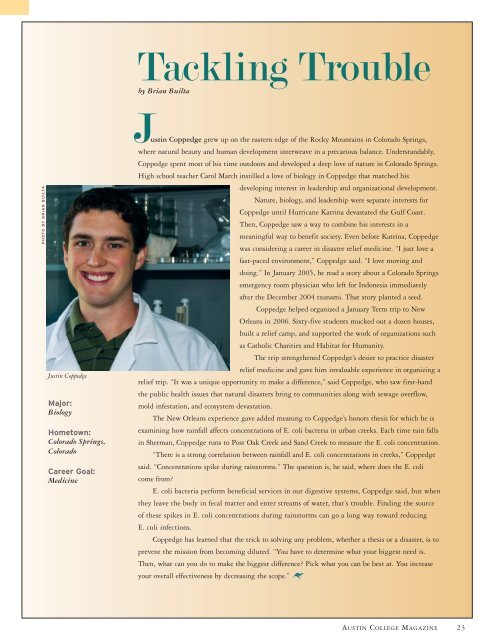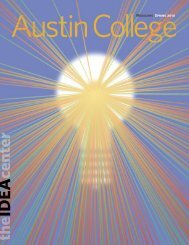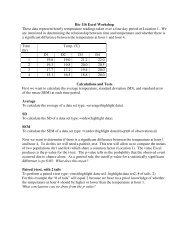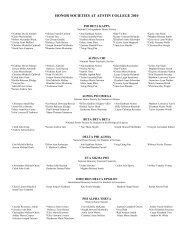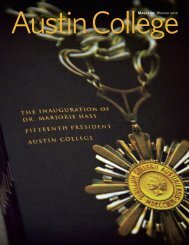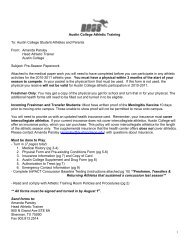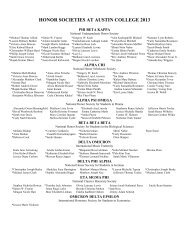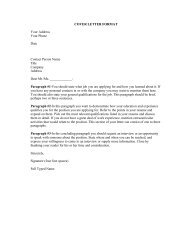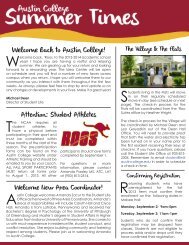February 2007 - Austin College
February 2007 - Austin College
February 2007 - Austin College
Create successful ePaper yourself
Turn your PDF publications into a flip-book with our unique Google optimized e-Paper software.
Tackling Troubleby Brian BuiltaPHOTO BY BRIAN BUILTAJustin CoppedgeMajor:BiologyHometown:Colorado Springs,ColoradoCareer Goal:MedicineJustin Coppedge grew up on the eastern edge of the Rocky Mountains in Colorado Springs,where natural beauty and human development interweave in a precarious balance. Understandably,Coppedge spent most of his time outdoors and developed a deep love of nature in Colorado Springs.High school teacher Carol March instilled a love of biology in Coppedge that matched hisdeveloping interest in leadership and organizational development.Nature, biology, and leadership were separate interests forCoppedge until Hurricane Katrina devastated the Gulf Coast.Then, Coppedge saw a way to combine his interests in ameaningful way to benefit society. Even before Katrina, Coppedgewas considering a career in disaster relief medicine. “I just love afast-paced environment,” Coppedge said. “I love moving anddoing.” In January 2005, he read a story about a Colorado Springsemergency room physician who left for Indonesia immediatelyafter the December 2004 tsunami. That story planted a seed.Coppedge helped organized a January Term trip to NewOrleans in 2006. Sixty-five students mucked out a dozen houses,built a relief camp, and supported the work of organizations suchas Catholic Charities and Habitat for Humanity.The trip strengthened Coppedge’s desire to practice disasterrelief medicine and gave him invaluable experience in organizing arelief trip. “It was a unique opportunity to make a difference,” said Coppedge, who saw first-handthe public health issues that natural disasters bring to communities along with sewage overflow,mold infestation, and ecosystem devastation.The New Orleans experience gave added meaning to Coppedge’s honors thesis for which he isexamining how rainfall affects concentrations of E. coli bacteria in urban creeks. Each time rain fallsin Sherman, Coppedge runs to Post Oak Creek and Sand Creek to measure the E. coli concentration.“There is a strong correlation between rainfall and E. coli concentrations in creeks,” Coppedgesaid. “Concentrations spike during rainstorms.” The question is, he said, where does the E. colicome from?E. coli bacteria perform beneficial services in our digestive systems, Coppedge said, but whenthey leave the body in fecal matter and enter streams of water, that’s trouble. Finding the sourceof these spikes in E. coli concentrations during rainstorms can go a long way toward reducingE. coli infections.Coppedge has learned that the trick to solving any problem, whether a thesis or a disaster, is toprevent the mission from becoming diluted. “You have to determine what your biggest need is.Then, what can you do to make the biggest difference? Pick what you can be best at. You increaseyour overall effectiveness by decreasing the scope.”AUSTIN COLLEGE MAGAZINE 23


